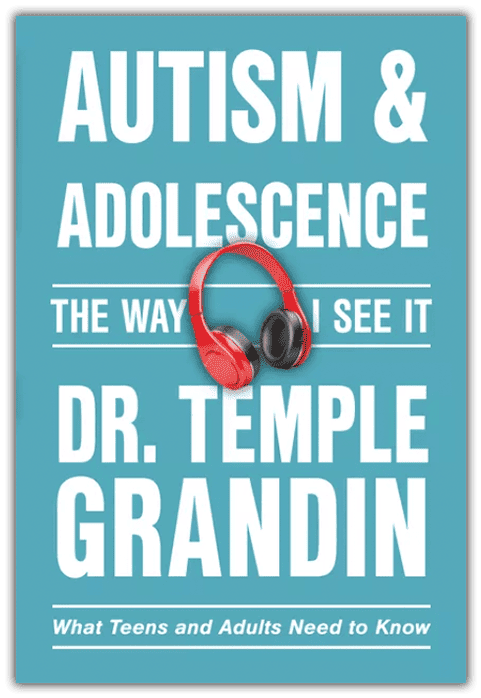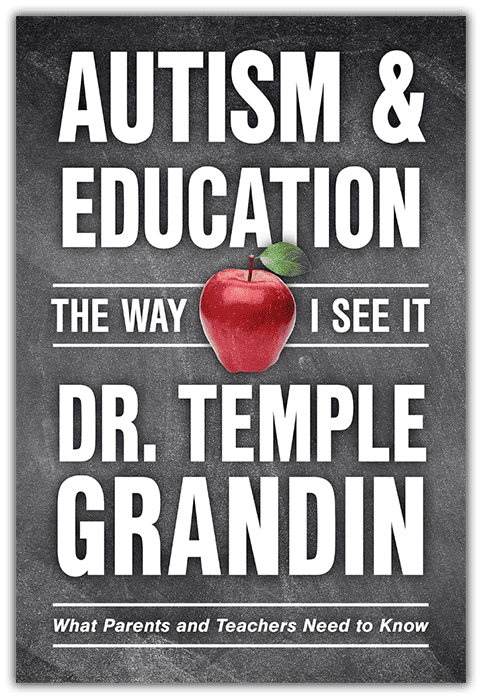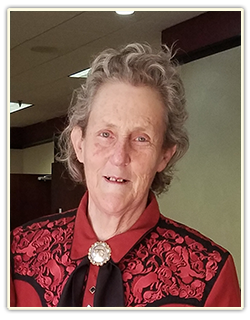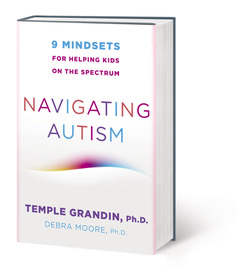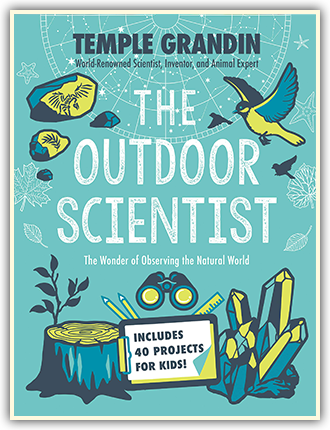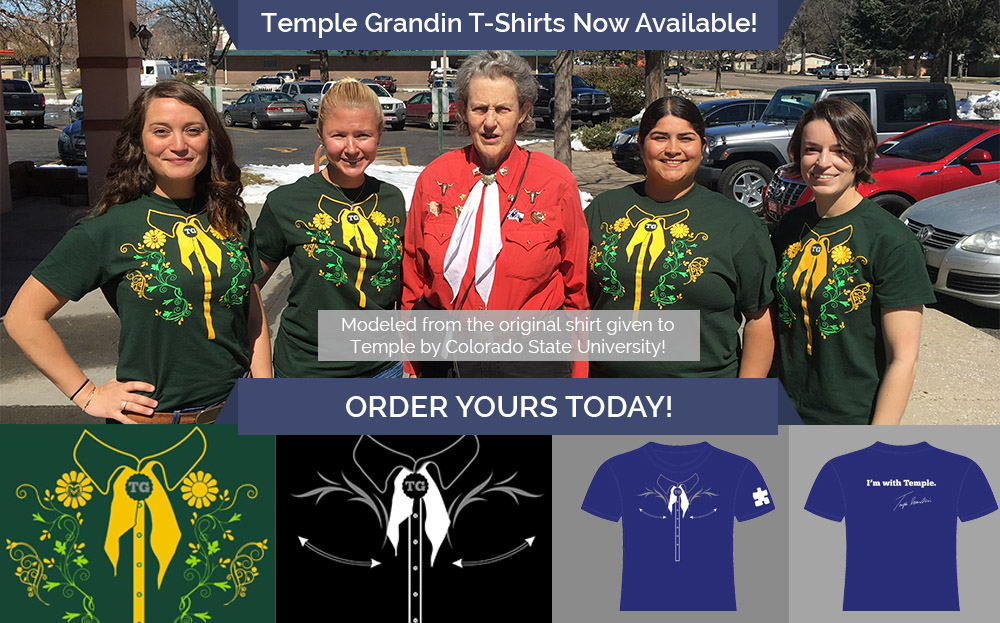
Webinars & Conferences
Upcoming Conferences
June 28 - Jacksonville, FL
July 29 - Denver, CO
August 14 - Harrisburg, PA
August 18 - Webinar
August 20 - New Orleans, LA
August 23 - Flint, MI
September 10 - Dallas Forth Worth
September 11 - Knoxville, TN
September 15 - Missoula, MT
September 19 - Cincinnati, OH
November 19 - Memphis, TN
A MUST LISTEN!!
Temple's Latest Books!
Temple Grandin earns Dole Leadership Prize!
NAVIGATING AUTISM
"The Outdoor Scientist"
Is Autism the Price for a Human Brain?
By Temple Grandin
Dept. of Animal Science
Colorado State University
The same genetic mechanism that make humans have a large brain may be the same genes that cause autism and schizophrenia. Researcher J.M. Sikela, at the Colorado School of Medicine and V.B. Searles at the University of California have found that copy number variation in the chromosome locus 1q21 may cause both autism and schizophrenia. Copy numbers of genetic code are like volume controls for different traits. A particular piece of genetic code may be either duplicated many times or have copies deleted. Extra copies may cause autism and a larger head and too few copies may cause schizophrenia. Just the right amount of copies will create a so-called normal human brain.
For years, I have maintained that a person’s brain can be either more cognitive (thinking) or more social emotional. A certain amount of variation in copy number would probably be part of normal human personality variation. Too much variation in copy number by adding too many extra copies or deleting too many copies may cause an obvious abnormality such as speech delay or hallucinations.
Autism and Schizophrenia are brain development opposites. Autism may cause the brain to develop extra processing power in the back of the brain for memory, math, art or music and people with schizophrenia may develop a brain that does not have enough connections. This might explain why schizophrenic symptoms develop in late adolescence. At this time, a process called synaptic pruning, trims and fine tunes neural connections. Since the network is skimpy, normal synaptic pruning may cause the network to start failing. When the network loses too many connections, symptoms such as hallucinations and delusion may start.
Human Brain Development is Unstable
The genetic systems that have created the huge human brain may lack stability. The genetic locas 1q21 contains a gene called NOTCH2NL. To create a large human brain, it allows undifferentiated stem cells to greatly multiply. This provides more cells that can turn into brain cells. Dr. I.T. Fidder and his associates state that “NOTCH2NL genes may have contributed to the rapid evolution of the larger human neocortex, accompanied by loss of genomic stability of the 1Q21.1 locas and resulting in recurrent neurodevelopmental disorders.”
Further Evidence of Autistic Traits are Part of Normal Personality Variation
In the animal kingdom, there are animals that are more social and animals that are more solitary. Lions are more social than tigers or leopards. Other common solitary mammals are polar bears and chipmunks. Jared Reser at the University of California conducted an extensive literature review. He found that the solitary mammals share many characteristics with autism. Compared to the animals that live in social groups, the solitary mammals have less oxytocin (social hormones) signaling an increased stress response during social encounters. They also have a reduced reaction to social separation from herdmates. In other words, they have a greater tolerance for being alone. Autism in its milder forms is simply normal personality variation.
Reading these papers was an eye opening experience. First of all, they indicate that the genetics of autism is also the genetics of normal brain variation in both human and animal social behavior. Secondly, the genetic mechanisms that cause autism are the same genetic mechanisms that gave humans a greatly expanded brain.
References
Fiddes IT et al. (2018) Human specific NOTZCH2NL genes affect notch signaling and cortical neurogenesis, Cell 31:1356-1369.
Pennisi, E. (2018) New copies of old gene drove brain expansion, Science, 360:951.
Reser, J.E. (2018) Solitary mammals provide an animal model for autism spectrum disorders, Journal of Comparative Psychology, DOI:10.1037/ao0034519.
Sikela, J.M. and Searles, V.B. (2018) Genomic tradeoffs: Are autism and schizophrenia the steep price for a human brain? Human Genetics, 137-1-13.
About Temple Grandin
Dr. Grandin did not talk until she was three and a half years old. She was fortunate to get early speech therapy. Her teachers also taught her how to wait and take turns when playing board games. She was mainstreamed into a normal kindergarten at age five. Oliver Sacks wrote in the forward of Thinking in Pictures that her first book Emergence: Labeled Autistic was “unprecedented because there had never before been an inside narrative of autism.” Dr. Sacks profiled Dr. Grandin in his best selling book Anthropologist on Mars.
Dr. Grandin became a prominent author and speaker on both autism and animal behavior. Today she is a professor of Animal Science at Colorado State University. She also has a successful career consulting on both livestock handling equipment design and animal welfare. She has been featured on NPR (National Public Radio) and a BBC Special – "The Woman Who Thinks Like a Cow". She has also appeared on National TV shows such as Larry King Live, 20/20, Sixty Minutes, Fox and Friends, and she has a 2010 TED talk. Articles about Dr. Grandin have appeared in Time Magazine, New York Times, Discover Magazine, Forbes and USA Today. HBO made an Emmy Award winning movie about her life and she was inducted into the American Academy of Arts and Sciences in 2016.
When she was young, she was considered weird and teased and bullied in high school. The only place she had friends was activities where there was a shared interest such as horses, electronics, or model rockets. Mr. Carlock, her science teacher, was an important mentor who encouraged her interest in science. When she had a new goal of becoming a scientist, she had a reason for studying. Today half the cattle in the United States are handled in facilities she has designed.
